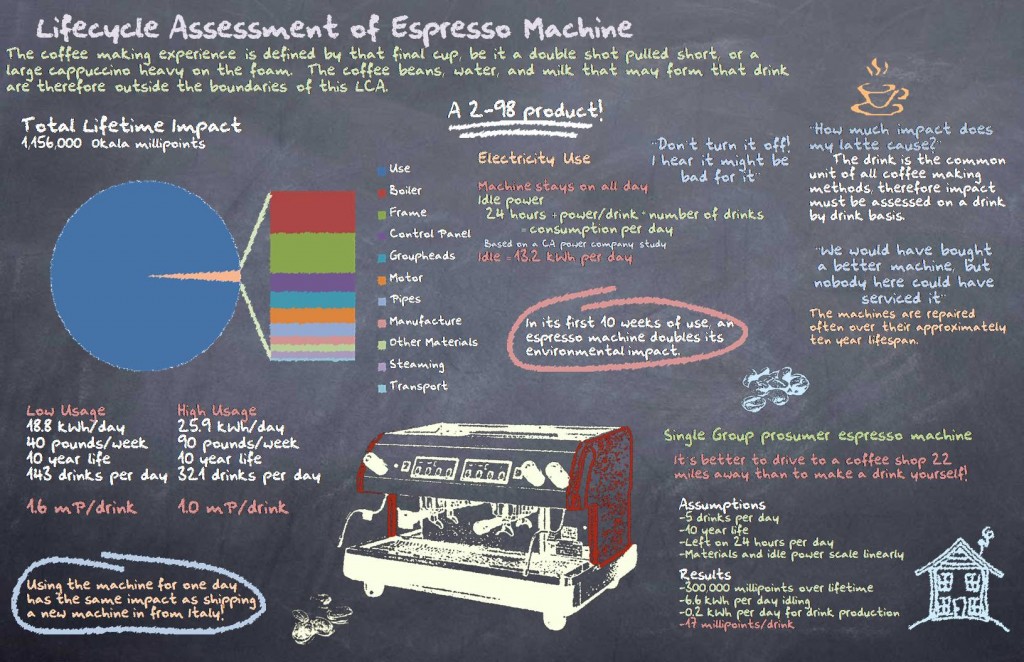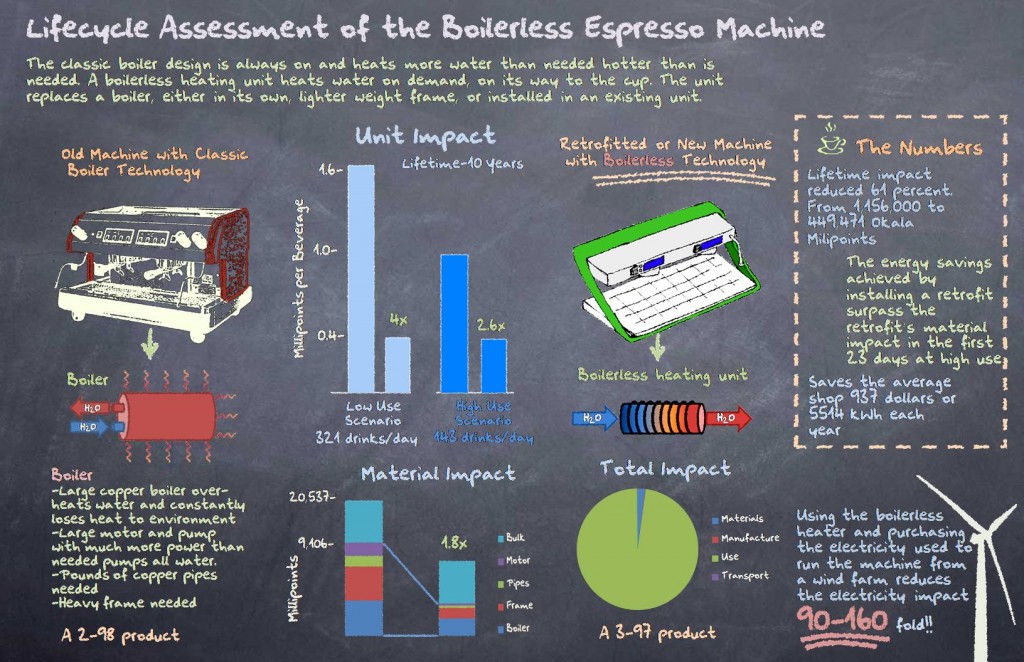Life Cycle Assessment of Espresso Machines
Background
For our Sustainable Design course, my team chose to perform a product tear-down and Life Cycle Assessment (LCA) of a commercial espresso machine. We utilized the Okala Guide’s Single Factor LCA tool for our analysis. Based on our findings, we redesigned the system to reduce environmental impact. Our resulting concept had a 4x factor of improvement while maintaining the desired experience of an espresso machine.
Results
Our project was documented through a series of four posters, shown below. The first phase focused on understanding the use context of commercial espresso machines. User studies allowed us to understand the way espresso machines are used as well as the people who use them. Based on our research, we identified the Function, Interaction, and Character of traditional espresso machines and developed a set of user personas. We also developed a framework for thinking about the role of the espresso machines in coffee shops by analyzing the interactions between the key stakeholders.

The Experience of the Espresso Machine: At the start of the project, we learned about how commercial espresso machines were used in coffee shops. By interacting with baristas and shop owners, we identified that the espresso machine is the center of the coffee shop experience. The understanding we developed of the users and use scenarios was critical in the redesign phase of the project.
With an understanding of how espresso machines were used in coffee shops, we began the tear down of our commercial espresso machine. During this phase, we disassembled the espresso machine, weighed each component, and used FT-IR and XRF lab equipment to identify the materials present in each component. This information, combined with data about the power usage and manufacturing details resulted in a full LCA of the product. Because of the long lifetime of commercial espresso machines and several usage factors, the total environmental impact was dominated by the use phase.

By taking data for power usage and disassembling and weighing each of the components in the espresso machine, we were able calculate the environmental impact of the commercial espresso machine. The key finding was that 98% of the environmental impact of a commercial espresso machine was due to electricity use.
Having identified that the power usage of the espresso machine was the key factor in its environmental impact, the team looked at how to improve the heating system. Traditional espresso machines have large copper or stainless steel boilers. Because these boilers are not insulated and machines are typically left on all day and night, there is a large amount of energy lost as heat. Our team developed the concept of a boilerless espresso machine which would use on demand heating elements to heat only the water needed for the coffee being brewed.

Based on the understanding of the context of use and the environmental impacts of the commercial espresso machine, we were able to redesign the espresso machine to minimize environmental impact while still keeping the experience intact.
